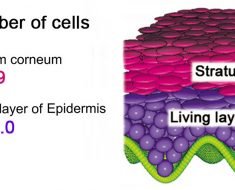In a remote southwestern pocket of the Central African Republic, doctor Patrick Karume and his small team are on the jungle frontline to quarantine a rare outbreak of monkeypox.
From a makeshift base in Zomea Kaka village, they trek 30 kilometres (18 miles) across muddy tracks to Bagandou, where a dozen children appear to have developed rashes characteristic of the virus which in rare cases can be fatal.
Monkeypox virus, first identified in the Democratic Republic of Congo in 1970, has symptoms similar to human smallpox, if less severe.
In May, the virus became a “public health threat”, according to local CAR authorities. It was the latest outbreak detected in CAR since 2013, according to World Health Organisation advisor Augustin Diebert.
Medecins sans Frontieres (MSF) dispatched an emergency team to set up in Zomea Kaka after three cases of the virus were identified. Already they have quarantined nine people, most of them children.
“Monkeypox may be endemic to this area,” Karume said, pulling off muddied boots after another trek out of their MSF base.
Before entering the “red zone” quarantine area cordoned off with a fence, everyone dons the required gear—rubber boots, disposable overalls, masks and goggles.
Nearby a few metres away, their patients sit on benches eating breakfast. Some show traces of the virus on their faces.
For some, crusts have discoloured parts of their skin. Peeling is a sign of healing.
“It’s a self-limiting virus, we just treat the symptoms and administer antibiotics and prevent infections,” Karume said.
“We used to think it was transmitted by monkeys, but it is more by rodents. Secondary transmission is through an infected person.”
“If nothing is done it can lead to complications,” he said, adding that one patient lost an eye because of an edema.
Medical detective
A graduate in epidemiology, the doctor does not just treat patients but attempts to trace their steps to see where they travelled and who they contacted to check on other possible cases.
It not only helps halt the spread, but allows him to understand this little-studied disease.
“This here is my champion, my miracle worker,” Karume said, smiling under his mask in front of a young Bagandou boy who has developed no symptoms unlike the rest of his family.
“If he tests positive for monkeypox, it means he has some sort of immunity,” he said. A blood sample is to be sent to the capital for testing.
Not far from the health centre, the team’s joint coordinator prepares everything for the day’s return expedition to Bagandou to take samples from a dozen suspected cases detected the day before.
The driver of the 4X4 vehicle steers onto what passes as a track winding through the vegetation.
When the team arrives in a village, some worried residents often think the MSF vehicles are there to respond to Ebola, the disease that ravaged parts of West Africa. Informing communities beforehand is key to allaying fears.
Arriving in Bagandou, adults welcome the MSF team. Only a few children move away, frightened by the memory of the sting of the last vaccination campaign conducted by the NGO in this area.
Source: Read Full Article





